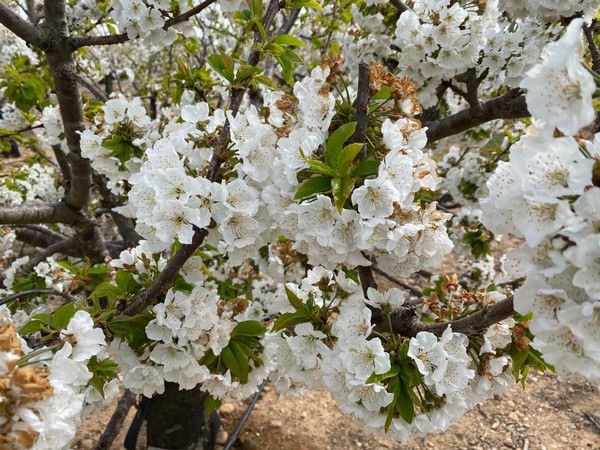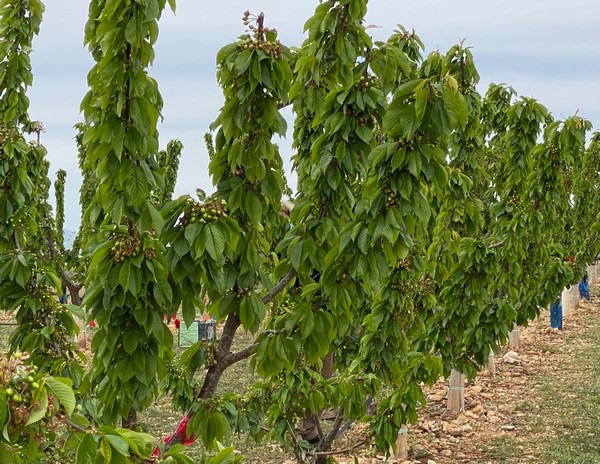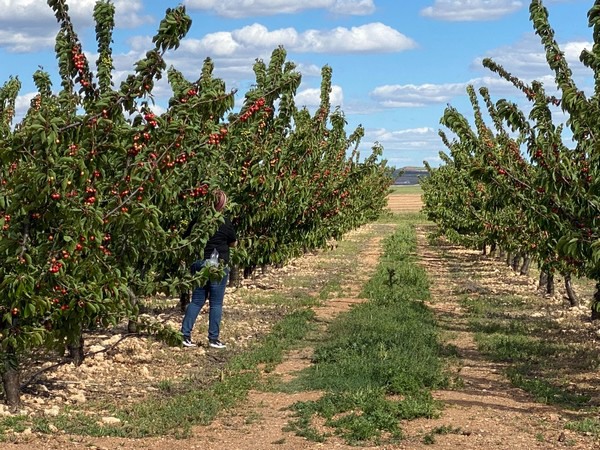It will still take a few days before the stone fruit campaign is in full swing in the Spanish region of Aragon. At the moment, producers are carrying out the thinning and harvesting of the first cherries, for which some declines are reported at the start. "The extreme heat during the bloom caused some problems in the setting of early cherries and that has affected the prospects," said Agustin Sanchez, secretary general of the Federación de la Fruta de Aragón. "However, we still expect to reach the figures of an average year, with above 32,000 tons."

This recovery in the volumes won't apply only to cherries. "Finally, this year, we will again achieve the stone fruit production figures we had around 2019. In 2020, we had some issues with frost, which we suffered again in 2021, and which had disastrous consequences in 2022." This year, however, another climatic factor is sparking greater uncertainty: the drought; mainly in the Caspe-Fraga area, where "the situation is critical because the reservoirs are at worrying levels."
"As the cherry campaign develops, we will have to see if the fruits suffer, in case the rainfall remains so scarce. In fact, in the Fraga area, the fruit is already suffering. In some areas there are already even limitations on the use of water and populations that are being assisted by firefighters to receive water."
"This is also occurring in areas where agricultural insurance does not apply. We will see how the summer evolves and whether the fruit sector will eventually avoid the disaster that the drought is becoming for extensive crops."

"Since 2016, the cherry acreage has been steadily expanding"
It should be recalled that in Aragon, the Russian veto led to adjustments of both productions and varieties, and that since 2014, the stone fruit acreage has been reduced by 5 to 7% per year, having only started to stabilize from 2018 onwards. "The readjustment took a while. It didn't really start until 2016, because the first few years, the Russian vetoes were temporary and there was still hope that they would be withdrawn. But, inevitably, everything that had been planted with the new markets for Aragonese fruit in mind, including Russia, had to adapt to the new scenario," said Agustín.
"It must be said that a decline has also been observed in the case of pome fruit, which has recorded significant commercial stagnation; in fact, up to 20% of the acreage has been lost. According to official data from the PAC 2021 and the Aragonese Institute of Statistics, the peach acreage is estimated at above 8,000 hectares, while that of pears and apples amounts to just 2,200 hectares in both cases. A few years ago, in 2014, they stood at around 3,800 hectares."
"For cherries in particular, the trend has been different. Since 2016, there has been a steady rise; and although it has slowed down a bit in the last two years, over the last decade it has gone from 7,000 hectares in the region to 12,000."

The loss of the Russian market was a notable turning point for the industry, which has had to deal with a widespread decline in consumption; more accentuated after the pandemic.
"I remember that between 2016 and 2018, fruit consumption in Italy dropped from just over 9 kilos per person per year to 7-odd, and this came close to becoming a state crisis. The Government of Italy launched a campaign to encourage consumption and the whole sector worked hard to try reversing that situation."

"Here in Spain, peach consumption stands below 4 kilos per person per year, but nothing has been done. To maintain or increase these figures, efforts are needed in terms of promotion. It is good that individual companies want to carry out promotional campaigns for their brands, but the Administration should also be aware of the importance of promoting fruit consumption in general and of communicating its benefits to consumers."
"Many years ago, at a fair in Madrid, there was a CEO of a Norwegian company who told us that the marketing volume of berries in his company was 5% in 1991/92, and that he was hired to help that area grow. After investing heavily in advertising, in just 5 years berries went from accounting for 5% of their marketed volume to over 30%. The power of promotion is unquestionable; the problem, it seems, is getting started."
For more information:
Agustín Sánchez
General Secretary of Federación de la Fruta de Aragón
direccion@fedefrutaragon.es
gerencia@aeamde.com
